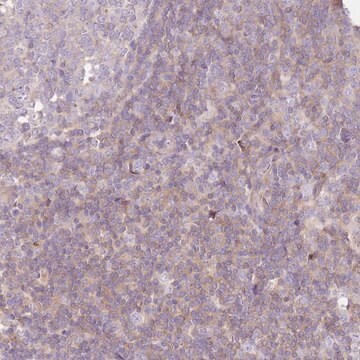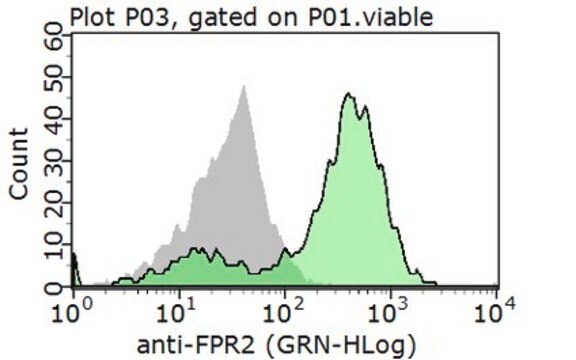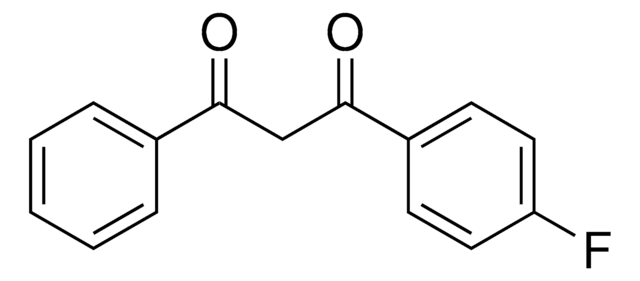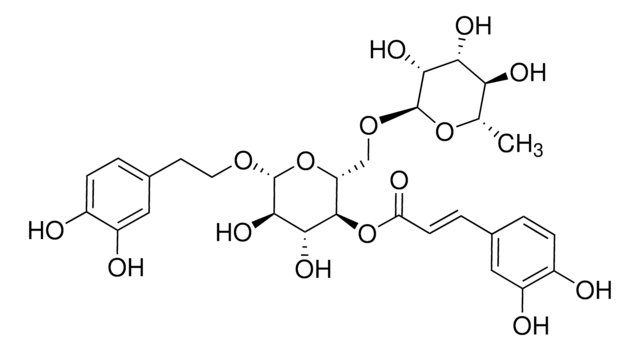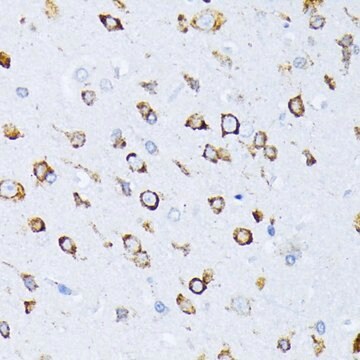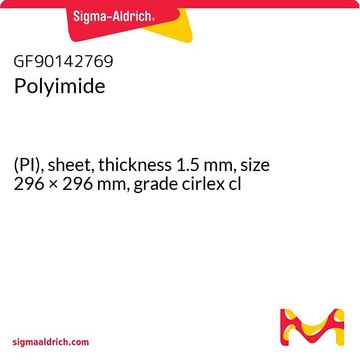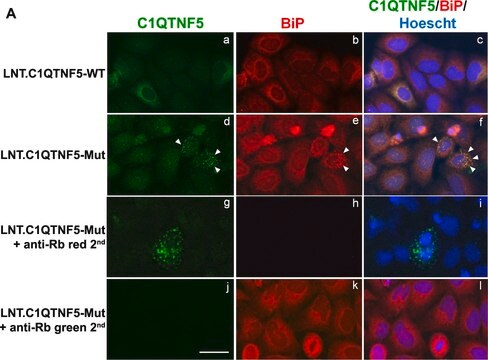MABF271
Anti-FPR1/2 Antibody, clone NFPR1
clone NFPR1, from mouse
Synonim(y):
Anti-Formyl Peptide Receptor 1/2, FMLP1/2, fMet-Leu-Phe receptor, fMLP receptor, N-formyl peptide receptor, FPR, N-formylpeptide chemoattractant receptor
About This Item
Polecane produkty
pochodzenie biologiczne
mouse
Poziom jakości
forma przeciwciała
purified immunoglobulin
rodzaj przeciwciała
primary antibodies
klon
NFPR1, monoclonal
reaktywność gatunkowa
human
metody
flow cytometry: suitable
immunocytochemistry: suitable
immunoprecipitation (IP): suitable
western blot: suitable
izotyp
IgG1κ
numer dostępu NCBI
numer dostępu UniProt
Warunki transportu
wet ice
docelowa modyfikacja potranslacyjna
unmodified
informacje o genach
human ... FPR1(2357)
Powiązane kategorie
Opis ogólny
Specyficzność
Immunogen
Zastosowanie
Immunocytochemistry Analysis: A representative lot detected FPR1/2 in human neutraphils (Riesselman, M., et al. (2007). J. Immunol. 179:2520-2531).
Immunoprecipitation Analysis: A representative lot immunoprecipitated FPR1/2 in neutraphils (Maaty, W.S., et al. (2013). JBC. 288(38):27042-27058).
Western Blotting Analysis: A representative lot detected FPR1/2 in neutraphils (Maaty, W.S., et al. (2013). JBC. 288(38):27042-27058).
Inflammation & Immunology
Immunoglobulins & Immunology
Jakość
Western Blotting Analysis: 1.0 µg/mL of this antibody detected FPR1/2 in 10 µg of THP-1 cell lysate.
Opis wartości docelowych
Postać fizyczna
Przechowywanie i stabilność
Inne uwagi
Oświadczenie o zrzeczeniu się odpowiedzialności
Nie możesz znaleźć właściwego produktu?
Wypróbuj nasz Narzędzie selektora produktów.
Kod klasy składowania
12 - Non Combustible Liquids
Klasa zagrożenia wodnego (WGK)
WGK 1
Certyfikaty analizy (CoA)
Poszukaj Certyfikaty analizy (CoA), wpisując numer partii/serii produktów. Numery serii i partii można znaleźć na etykiecie produktu po słowach „seria” lub „partia”.
Masz już ten produkt?
Dokumenty związane z niedawno zakupionymi produktami zostały zamieszczone w Bibliotece dokumentów.
Nasz zespół naukowców ma doświadczenie we wszystkich obszarach badań, w tym w naukach przyrodniczych, materiałoznawstwie, syntezie chemicznej, chromatografii, analityce i wielu innych dziedzinach.
Skontaktuj się z zespołem ds. pomocy technicznej